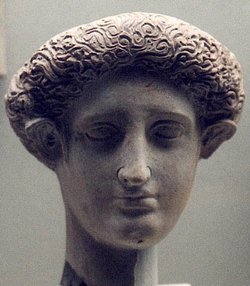
The name is not found in any extant author earlier than Polybius: but the latter, in speaking of the cities of Magna Graecia in the time of Pythagoras, uses the expression, “the country that was then called Magna Graecia” (Pol. Evidently the Neapolitan, Syracusan, and Rhegine talents of Festus were bronze talents : it remains to be discovered what values were attached to the bronze coins of those cities.MAGNA GRAE´CIA MAGNA GRAE´ CIA ( ἡ μεγάλη Ἑλλάς), was the name given in ancient times by the Greeks themselves to the assemblage of Greek colonies which encircled the shores of Southern Italy.

are marked with a monogram of Π and Μ, which may be interpreted as 80 drachmas = 1 obol. 115) must be 80 and 40 bronze drachma pieces, and so obols and half-obols on the silver standard: earlier bronze coins of the second century B.C. This is borne out by the bronze coins of Cleopatra VII marked Π and Μ, which, as Regling pointed out ( Z.f.N. The statement of Festus would give a ratio of 500 : 1. Atticum est sex milium denarium : Rhodium et cistophorum quattuor milium et quingentorum denarium : Alexandrinum xii denarium : Neapolitanum sex denarium : Syracusanum trium denarium : Rheginum victoriati.’ The clue to the interpretation of the last four items has been given by Ptolemaic papyri, which show that the bronze drachma in Egypt was converted to silver at a ratio up to 480:1. If this is accepted, the absence of examples from the Beneventan hoard does not really affect the question of the date of the series, since Beneventum is well outside the area in which they were designed to circulate and thus the consideration of style becomes more important for dating purposes.ĩ Festus p. the letters BP ET, which indicate that the nymph represented was one known in Bruttium, not Parthenope of Neapolis, and therefore the objective of the coins was more likely to be the toe of Italy rather than Campania. But the coin mentioned above, which is illustrated on Plate ii, 1, 2, doubtless suggested to him that his conclusions might require revision in some details : the types are those illustrated on Plate vii, 13, of his ‘Horsemen’ of Tarentum, except that the nymph's head is turned to the right instead of to the left but by the head are. in the district where they might have been expected to occur, he also concluded that they originated after that date, although he recognised that, so far as style is concerned, some of them might have been struck earlier. As no specimens of this class were found in the Beneventan hoard, buried probably about 310 B.C.


There is a well-known class of Tarentine coins which have as their obverse type the head of a nymph, in this resembling the coins of Neapolis, instead of the normal Tarentine type of Taras on a dolphin : they are struck on the standard, not of Tarentum, but of the cities on the west coast of Magna Graecia and Evans adopted the view that they had been intended for circulation alongside of the Neapolitan coins in Campania. From time to time he brought such coins down to the Museum and discussed them and one of them may serve not only as a text for this paper, but as an illustration of his keen outlook in wide fields of archaeology.
ROMAN CONQUESTS OF MAGNA GRAECIA SERIES
Amongst the coins bequeathed by Sir Arthur Evans to the Ashmolean Museum there were, in addition to the extensive series of late Roman currencies and their derivatives, on which he had been working for some years, many others of various groups which he had acquired and put aside as raising points of interest or requiring further investigation.


 0 kommentar(er)
0 kommentar(er)
